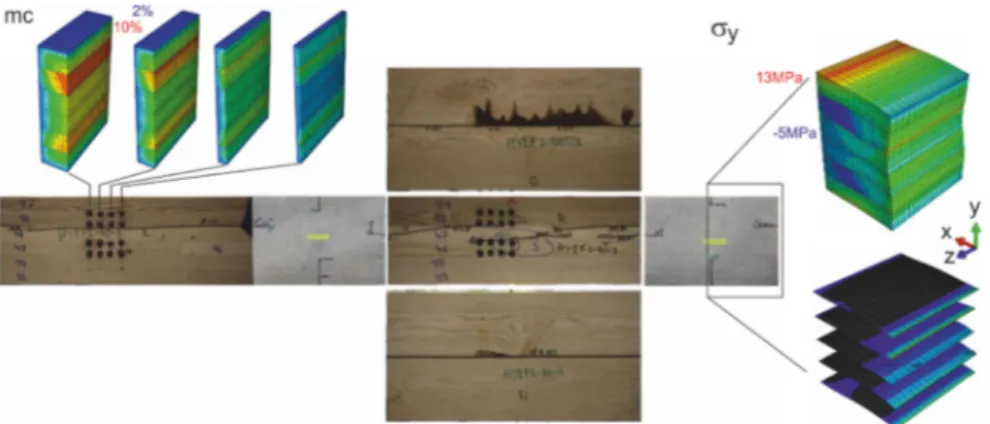ISBN: 978-91-88898-64-7
7
Numerical Optimization of Glued Laminated Timber with Mixed Species
Falk K. Wittel†*, Lukas Blum†, and Peter Niemz‡ †Institute for Building Materials, ETH Zurich, fwittel@ethz.ch
‡Bern University of Applied Sciences, peter.niemz@bfh.ch
The integration of hard-wood species into structural timber engineering is driven by the development of structures with increased span-width, reduced cross-sections and local load introduction in connections. Mono-species structure either require large cross-sections to avoid excess loads in soft-wood or large volumes of hard-wood – rendering structures less economic. Structural members with mixed species, however, should be designed in a way that hard-wood is applied in the most efficient way to make use of its advantageous properties. Unfortunately, many structures that realize mixed specie concepts show damage in form of laminae cracking or adhesive bond-line delamination [1]. Due to strongly different hygro-mechanical behavior of soft- and hard-wood, considerably increased residual stresses occur, that can accumulate. Not only do those failures pose an aesthetic defect from the architectural point of view, delaminations, in particular at load introduction points, also raise durability safety issues, as they have the potential to grow with seasonal moisture cycles even after decades and should thus be taken into account in design considerations.
The study is motivated by the moisture-induced damage in the “ETH House of Natural Resources” a pilot building erected in Zurich with glulam members of spruce combined with ash with cross-sections of 36x36cm. Since the consequences of moisture induced stresses can only be studied on full scale samples, we perform a combined experimental and numerical study of moisture induced damage evolution in structural sized, instrumented glulam members out of spruce (Picea abies) and/or ash (Fraxinus excelsior) with varied lamellae thickness and stacking topology at different climatic conditions. Resulting moisture and stress fields are calculated and confronted with experimental observations, before the stress evolution under cyclic loading is predicted, using a hygro-mechanical model for wood. For meaningful simulations of wood components at high stress horizons and changing climatic conditions, the effect of moisture on all mechanical properties needs to be considered, determining the various contributions to the deformation like the elastic response, swelling/shrinking, plastic, viscoelastic, and mechano-sorptive behavior, as well as moisture transport [2].
Figure 1: Exemplary ash/spruce sample with calculated moisture and stress fields for low humidity.
The model allows for the simulation of seasonal moisture cycles to assess the risk of damage for different configurations. We want to find the optimal configuration of ash/spruce lamella with respect to a required bending modulus and minimal risk of delamination under cyclic moisture-induced stress buildup. Since a single run can take up to several hours, gradient-based optimization methods are unfeasible. We demonstrate that surrogate models can efficiently be employed to find an optimal topology of a multi-species glulam beam with respect to multi-criteria objective functions. The method described reaches beyond todays stress based design and can be applied to systematically reduce moisture induced stress buildup, increase dimensional stability and hence durability of timber structures.
References
[1] M.M. Hassani, F.K. Wittel, S. Ammann, P. Niemz, H.J. Herrmann: Moisture-induced damage evolution in laminated beech. Wood Science and Technology, 50 (2016), 917–940.
[2] M.M. Hassani, F.K. Wittel, S. Hering, H.J. Herrmann: Rheological model for wood. Computational Methods in Applied Mechanics and Engineering, 283 (25015), 1032–1060.
